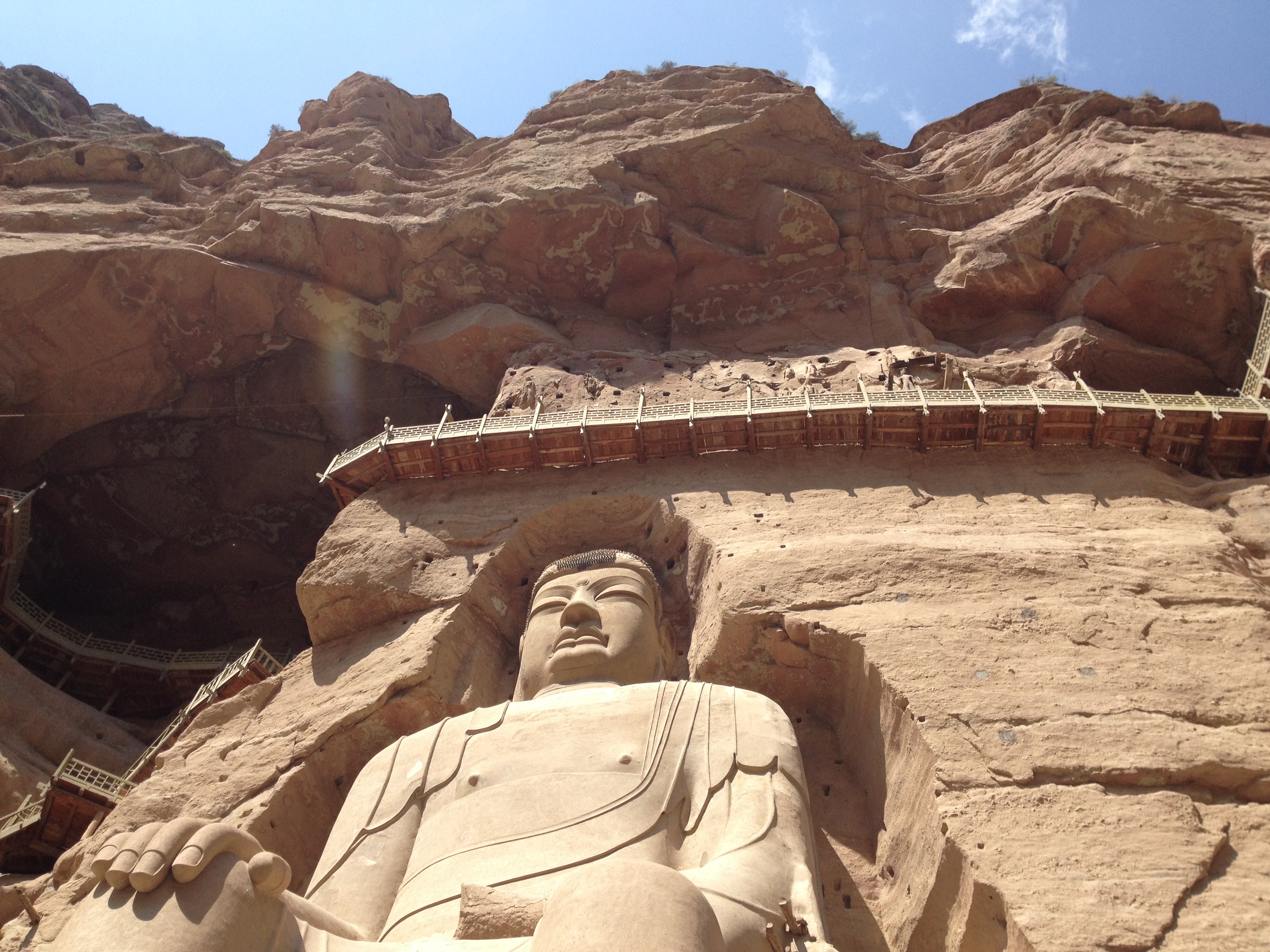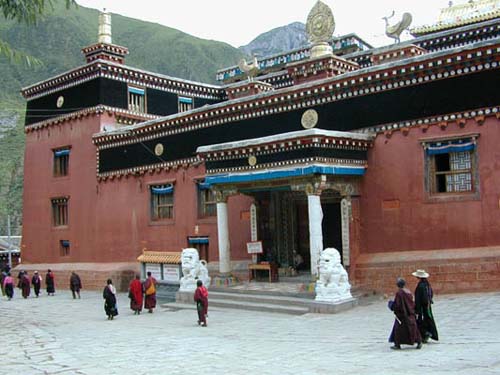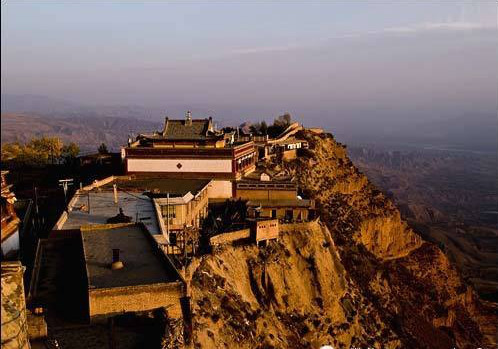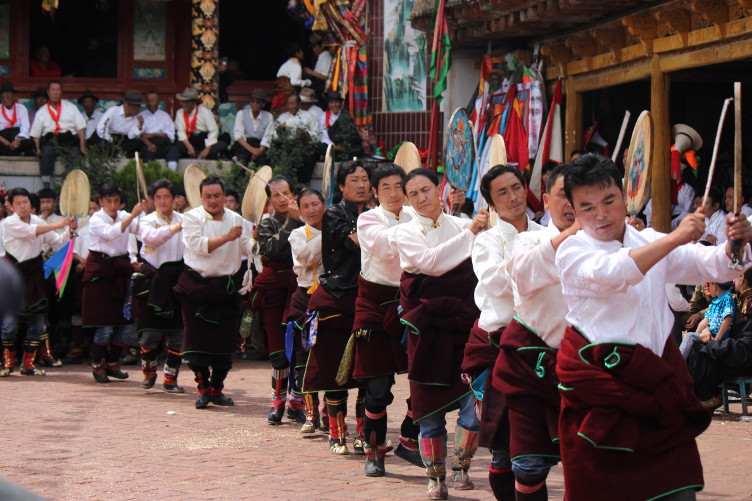Binglingsi grottoes
A giant cave is situated in Dasigou, a valley of mount Jish. it is about 35km southwest of Yongjing county in Gansu province. The caves were first cut in 420ac and the cutting continued for more than a thousand years. Now the caves are divided into three parts: the upper temple part, the lower temple part, and the caves. There are all in 216 cave niches. More than eight hundred images. About one thousand square meters of mural paintings and fifty pagodas. more than four hundred pieces of cultural relics are kept in the museum, including colored pottery, gold and bronze images of Buddha,(Tangka and other statues made in Tibetan temples), and Buddhist scriptures. In 1961 Bingling cave temple was chosen as one of the national major units of cultural relics
.
Dege Parkhang in Kham; The Treasury of Tibetan Culture & Arts
Dege Parkhang (Sutra-Printing House), also called Dege Auspicious and Wisdom-Gathering House, whose full Multi- Auspicious Gate of the Great Dharma Stack-Room of Dege Sutra-Printing House of Tibetan Cultural Treasures, is located in Dege County on the east bank of the Drichu (Yanzi)River northwest of the Ganze Tibetan Autonomous Prefecture of Sichuan Province, built in1685 by Chokyi Tenpa Tsering, the 12th headman of Dege. More than 200000 blocks of Buddhist scriptures, historical, literature and art, medical, astronomical, and calendar-arithmetical book edition in Tibetan are kept in the house. The Printing house is the largest of the three big Sutra-printing houses in Tibet. (Lhasa Sutra-printing House in Lhasa, Labrang Parkhang: print House in Gansu, Amdo. and Dege Parkhang in Sichuan, Kham). It was designated as a major unit of cultural relics under provincial protection in 1980 and as a major unit under state protection in 1996. Dege, meaning "land of benevolence" in Tibetan, is derived from the "ten benevolences of the 4 orders" of Tibetan Buddhism. The Dege clan and the toponym of Dege both began to appear in the early period of the Yuan Dynasty and the year 1913 saw the establishment of Dege County. It is the seat of Dege County and was once the center of the kingdom of Dege, one of the largest and most important of the regional kingdoms in Kham. For more information read the official site for Dege Parkhang. www.degeparkhang.org
Shakhung Monastery
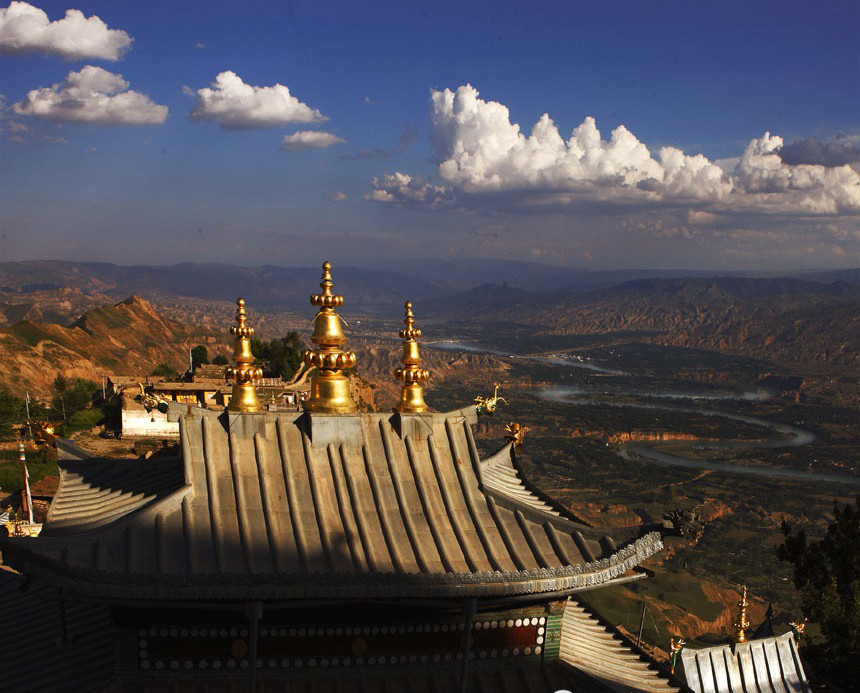
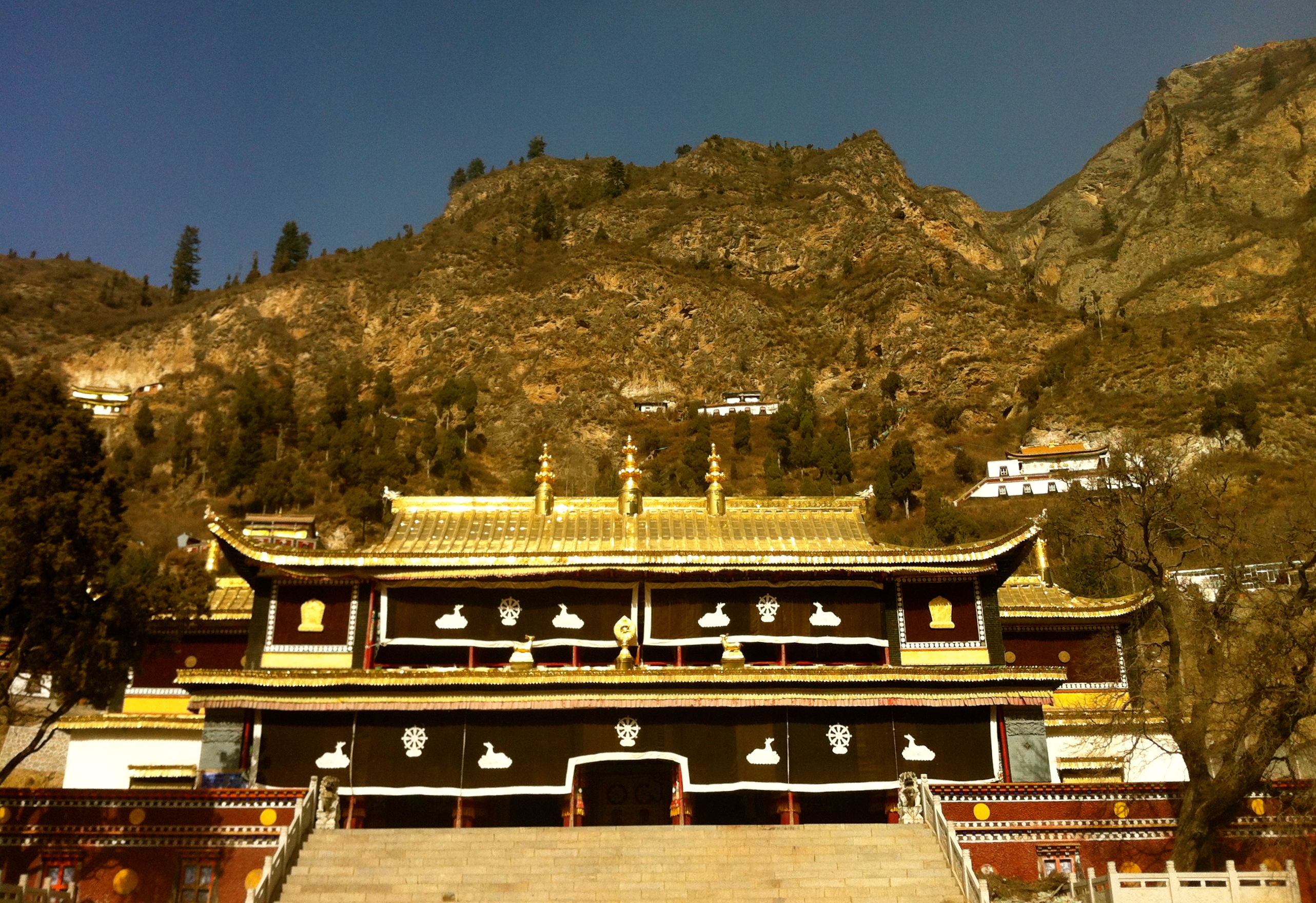 Gonglung Monastery
Gonglung Monastery
Rebgong
Rebgong is not only known for its unique artwork but also known for its social events. For instance, Lurig and Monlam Chenmo. Lurig occurs In June and Monlam Chenmo in February. All the local Tibetans attend the festival wearing traditional customs. Lurig is one of the oldest, traditional dances of Tibet and is also known as the Shaman festival. Each village has its own performance.

